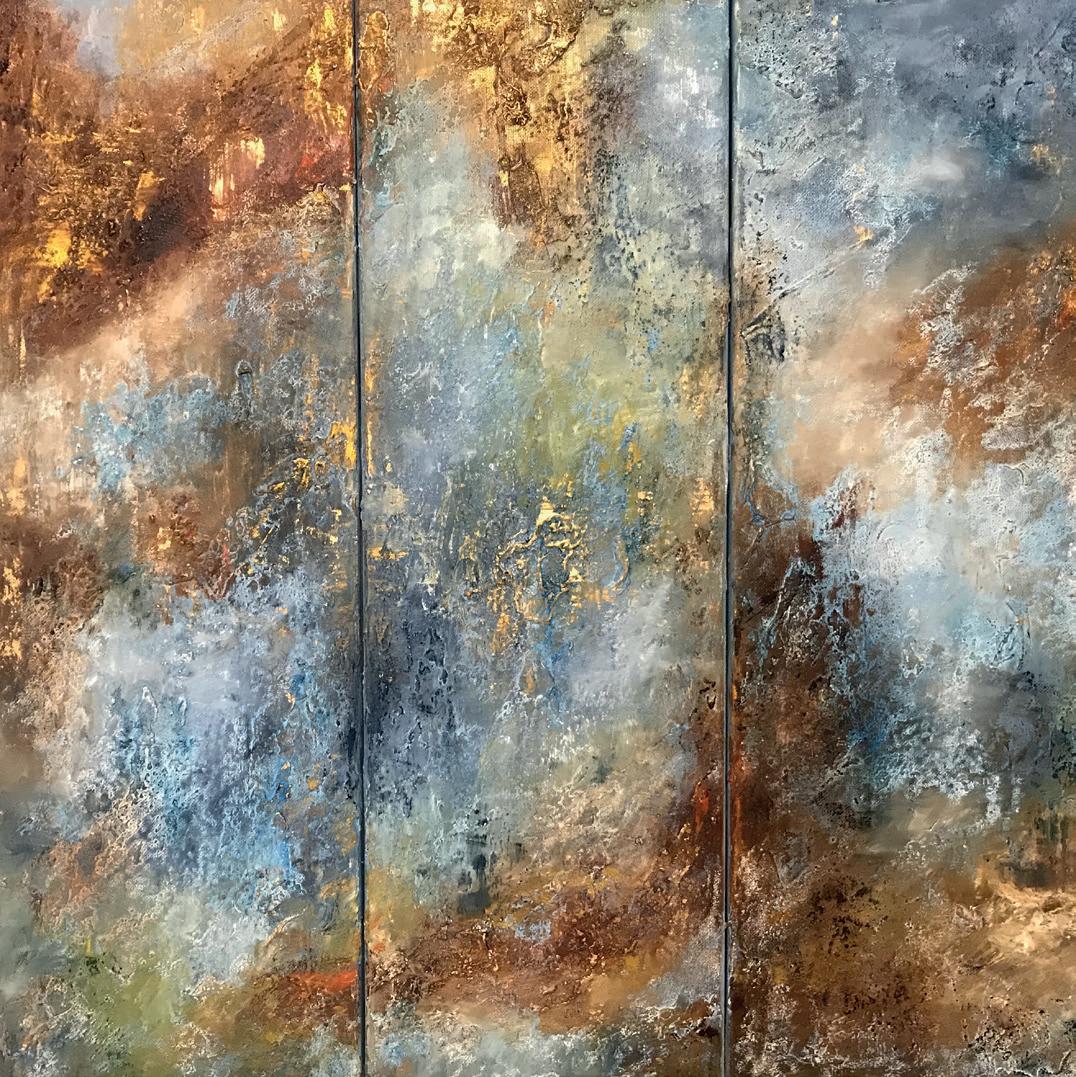
3 minute read
The Import n e o Sound A Criti l An lysis y Christopher Rosewood
The Importance of Sound: A Critical Analysis
Cascading with poetry and emotion, Diana Malivani brings joy and music through a diverse and stimulating range of profound elements. There is a fervent academic depth to her works of art that eloquently reference the creative disciplines that are represented by the boundless facets of her artistic endeavour. It is overwhelmingly apparent when considering Malivani’s collection that she is fundamentally moved by music; her series of work entitled ‘Seeing Music’ radiates with the vitality of life and vibrates with an intense sense of movement that has the rare ability to encompass the magical aura of complete concertos and symphonies. Indeed, the individual brushstrokes passionately expressed in Summer Silence seem to embody the distinct musical notes dancing across the canvas that seamlessly bridge the chasm between the aural and visual arts with majestic albeit fluid harmony.
The explosive tones and gestures within In A Summer Garden create a subtle but powerful connection with Amadeus Mozart, who is famously said to have seen sounds through hues. Whilst the abundance of colour allows the spectator to observe a manifestation of synesthesia, the correlations run far deeper; Mozart’s predilection for composing uplifting divertimenti for dances is vivaciously rendered through the prodigious sense of joy that exudes from Malivani’s work. Mozart’s study of irregular phrase lengths reflects his rejection of Baroque styles of music, which is mirrored in Malivani’s avant garde approach that shares the philosophical exploration of unprecedented creative methods with the Futurist artistic movement, particularly when considering the visual creations of such artists as Giacomo Balla and Umberto Boccioni as well as the musical scores of Filippo Marinetti.
Malivani’s deep, analytical and conceptual approach is further exemplified in her work The Overture, a composition that propels visual parallels with the graphic musical scores of John Cage and of the subsequent Fluxus movement. The motifs depicted across Malivani’s canvas are reminiscent of the experimental symbols indicating sound, and at once the spectator can tangibly experience the invigorating crashing of cymbals through the artist’s expressive iteration of movement and audio. The sensorial ties between divergent elements cast cognitive comparisons with Gerard van Honthorst’s striking scenes that harbour the raucous atmosphere of music and dancing.
Not only does Malivani coalesce the visual and aural arts, but she also incorporates an undeniable element of performance in her works; Show Must Go On fully engages the mellifluous energy of a live orchestra, while Waltz of the Flowers (Triptych) encompasses the graceful movement of Tchaikovsky’s ballet with each gesture. In this regard, Malivani effortlessly brings together the spontaneous tenor of Gino Severini and Jean Beraud, whose representations of movement and the primordial euphoria that music brings to an audience is flawlessly translated by the finesse of Malivani’s emblematic style.
Despite the highly abstracted structure of Malivani’s works, there is a notable essence of Pointillism that is particularly demonstrable in State of Mind. The dramatic brushstrokes impactfully evoke thoughts of Andre Derain and simultaneously demonstrate the staccato notes of Antonio Vivaldi’s Storm from the iconic Four Seasons concertos. The evolving accelerandos of the piece are reflected in the combative application of paint and crescendos of colour thus contained that have ethereal connections with the art of Gustav Klimt. Yet Malivani demonstrates an extraordinary versatility throughout her artwork; indeed, Listening to Chopin (Triptych) finds discernable links with J. M. W. Turner through the elegant and hazy light of the misty scene presented, which instantly brings to mind the lyrical and refined melodies of Frederic Chopin with a genteel and peaceful touch.
Deep ochre and umber hues contribute to the cataclysmic and intellectually provoking juxtaposition between nostalgic and extant notions found within Renaissance Music, which at once evokes the unequivocal spirit of past eras with the lightness of William Byrd’s lilting arrangements for vocals and strings, whilst also reflecting the essence of modernity found in Marcel Duchamp’s paintings through their elevated abstraction and evocative transience. By modernising the traditional elements of Renaissance music, Malivani expands the limitations of creation as she visually translates a harmonious relationship between entrenched historical and contemporary academic ideals.
Diana Malivani possesses an inspirationally innovative approach through which she brings together various artforms and presents her limitless imagination and creativity. Her thirst for new approaches incites an enlightening visual and cerebral experience that leaves the spectator roused by her energy but free to explore the boundless meanders of colour, gesture and rhythm.
hristopher Rosewood, International Confederation of Art Critics
“Listening to Chopin” (Triptych) oil on canvas, 2019

“Waltz of Flowers” (Triptych) oil on canvas, 2019







